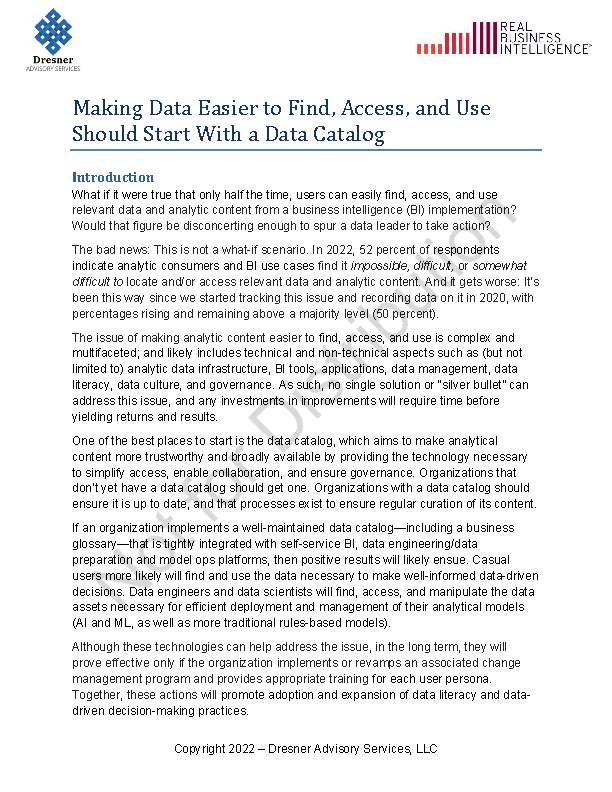
What if it were true that only half the time, users can easily find, access, and use relevant data and analytic content from a business intelligence (BI) implementation? Would that figure be disconcerting enough to spur a data leader to take action?
The bad news: This is not a what-if scenario. In 2022, 52 percent of respondents indicate analytic consumers and BI use cases find it impossible, difficult, or somewhat difficult to locate and/or access relevant data and analytic content. And it gets worse: It’s been this way since we started tracking this issue and recording data on it in 2020, with percentages rising and remaining above a majority level (50 percent).
The issue of making analytic content easier to find, access, and use is complex and multifaceted; and likely includes technical and non-technical aspects such as (but not limited to) analytic data infrastructure, BI tools, applications, data management, data literacy, data culture, and governance. As such, no single solution or “silver bullet” can address this issue, and any investments in improvements will require time before yielding returns and results.
One of the best places to start is the data catalog, which aims to make analytical content more trustworthy and broadly available by providing the technology necessary to simplify access, enable collaboration, and ensure governance. Organizations that don’t yet have a data catalog should get one. Organizations with a data catalog should ensure it is up to date, and that processes exist to ensure regular curation of its content.
You do not have permission to access this document. Make sure you are logged in and/or please contact Danielle with further questions.